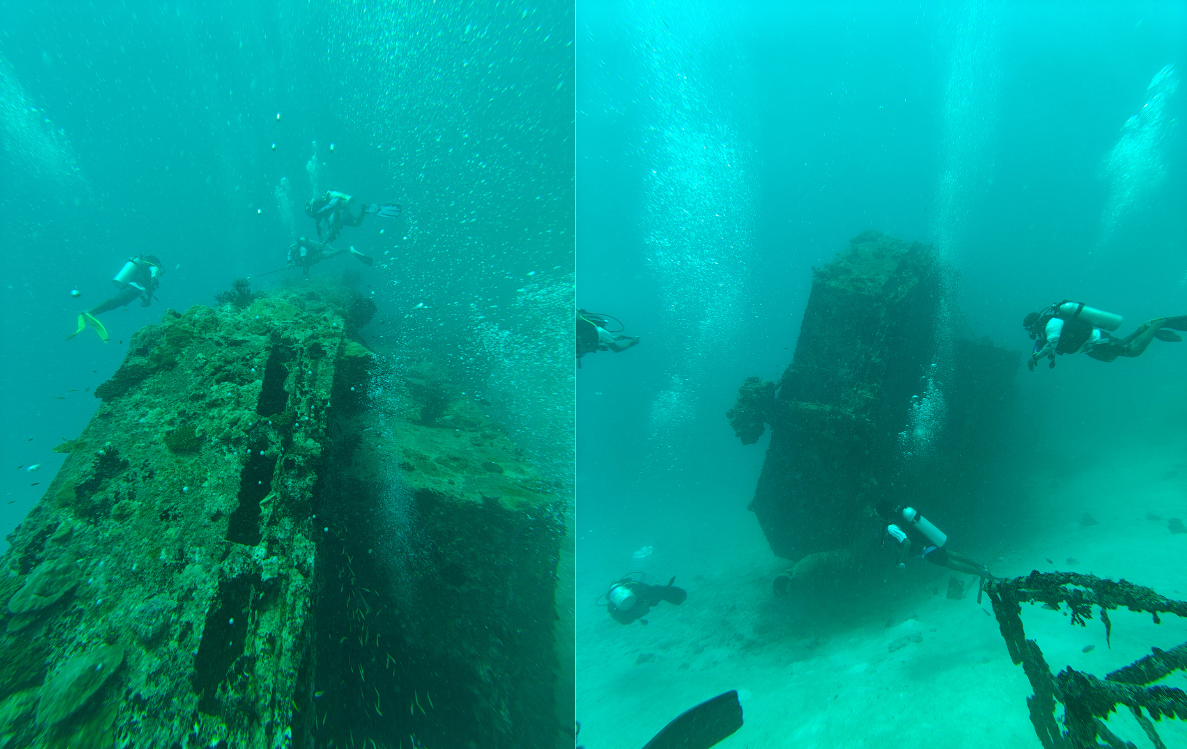

Dhawa Ihuru is celebrating the 25th anniversary of the iconic Rannamaari shipwreck, a key feature of their renowned house reef and a symbol of marine conservation.
Since its sinking in 1999, the Rannamaari has evolved into a thriving artificial reef, attracting diverse marine life and offering unforgettable diving experiences for enthusiasts from around the world.

At the heart of Dhawa Ihuru’s commitment to marine conservation, the shipwreck has become a vibrant underwater habitat, fostering coral growth and a variety of marine species, including batfish, moray eels, and groupers. Abdul Azeez Abdul Hakeem, a Maldivian partner of the resort, is deeply passionate about this initiative, emphasizing how Rannamaari shipwreck serves as a testament to the effectiveness of artificial reefs in enhancing biodiversity and regenerating reef ecosystems.
The Birth of Rannamaari
The idea for Rannamaari originated from Abdul’s extensive diving experiences around the world. His fascination with shipwrecks, particularly the Victory shipwreck near Male, inspired him to create a similar site at his own house reef. “I found it an amazing thing. It became a refuge for a lot of fish and other marine animals,” he recalled.
In 1999, after an extensive search, Abdul discovered an old dredger in Thilafushi, which had once served to reclaim land for Male. The dredger was generously offered to him, and he organised a team to clean it and make necessary repairs. However, the journey to its resting place was fraught with challenges. “We were really lucky. If it had fallen on the reef, then there would’ve been a lot of damage to the coral,” he shared.
Ultimately, the dredger sank unexpectedly during the evening before the planned sinking, leading to its dramatic naming as Rannamaari.
An Underwater Ecosystem
Today, Rannamaari lies 30 meters deep on a bed of white sand, having transformed into a sanctuary for marine life. Abdul explained, “Almost all shipwrecks are very good for the reef. They serve as nurseries for small fish, providing them with shelter from predators.” Over the years, the shipwreck has become home to thriving populations of soft and hard corals, enhancing the local ecosystem.

The wreck supports a diverse array of marine species, serving as a resting place for nurse sharks, stingrays, and vibrant fish that are often unseen within the reef. “It is playing an important role in enriching the reef,” Abdul emphasised.
Monitoring and Maintenance
For the past 25 years, Rannamaari has been closely monitored, with annual dives documenting its growth and changes. “If you talk to the dive guides here, they can show you photos of how it was in the beginning and how it is today,” Abdul noted, highlighting the shipwreck’s evolving story.
The maintenance strategy is straightforward: “Don’t touch, don’t take anything. Just let it be.” This approach allows the natural ecosystem to thrive while educating visitors about the importance of preserving this unique habitat.
Cultural and Environmental Legacy
Abdul envisions that Rannamaari will leave a lasting legacy for future generations. “I would recommend more shipwrecks in resorts. It adds to the beauty of the reef and serves as an educational experience for children and young people,” he expressed. The shipwreck not only bolsters marine life but also provides a fascinating opportunity to learn about the impacts of environmental changes.
The history of Rannamaari shipwreck is not merely that of a shipwreck; it is a testament to the enduring connection between humans and the ocean. Through Abdul’s vision and dedication, this once-forgotten dredger has become a thriving habitat, enriching the Maldives’ marine ecosystem while educating future generations about the delicate balance of ocean life. As the waters continue to change, Rannamaari shipwreck plays a crucial role in preserving the beauty and biodiversity of the Maldives for years to come.